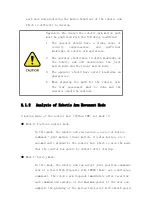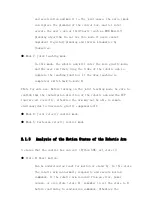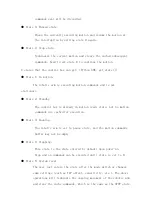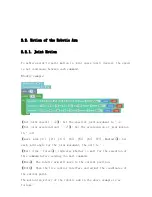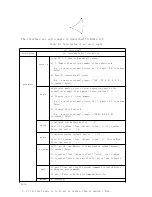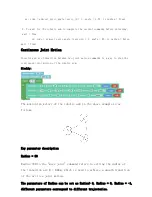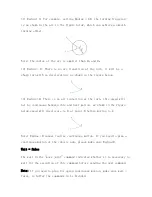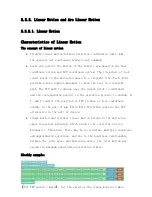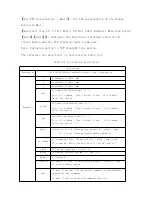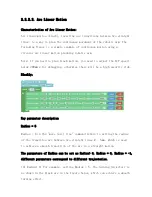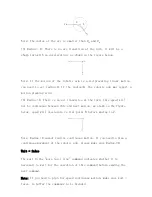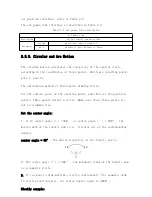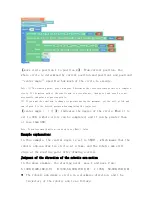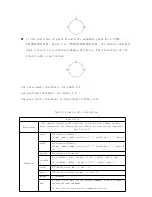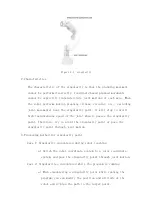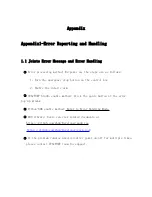
and acceleration and map it to the joint space, the servoj mode
can replace the planning of the control box, and let robot
execute the user's own or third-party (such as ROS Moveit!)
planning algorithm. Do not use this mode if users cannot
implement trajectory planning and inverse kinematics by
themselves.
● Mode 2: Joint teaching mode.
In this mode, the robotic arm will enter the zero gravity mode,
and the user can freely drag the links of the robotic arm to
complete the teaching function. If the drag teaching is
completed, switch back to mode 0.
*Note for safe use: Before turning on the joint teaching mode, be sure to
confirm that the installation direction of the robotic arm and the TCP
load are set correctly, otherwise the arm may not be able to remain
stationary due to inaccurate gravity compensation!*
● Mode 4: Joint velocity control mode.
● Mode 5: Cartesian velocity control mode
2.1.3
Analysis of the Motion Status of the Robotic Arm
3 states that the control box can set: (Python SDK: set_state ())
● State 0: Start motion.
Can be understood as ready for motion or stand-by. In this state,
the robotic arm can normally respond to and execute motion
commands. If the robotic arm recovers from an error, power
outage, or stop state (state 4), remember to set the state to 0
before continuing to send motion commands. Otherwise the














